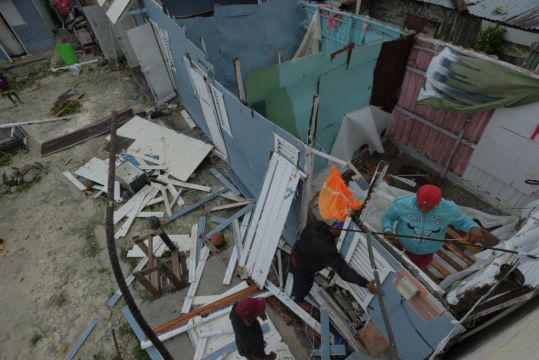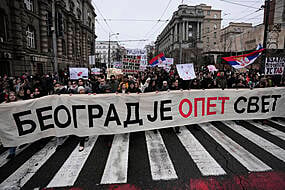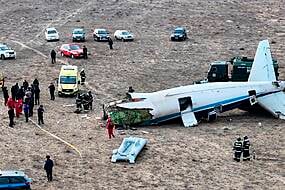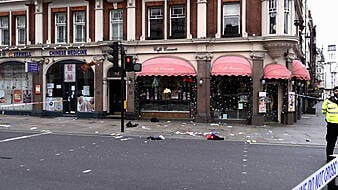Hurricane Fiona has roared over the Dominican Republic a day after knocking out power to all of Puerto Rico and causing damage the governor described as “catastrophic”.
The blow from Fiona was made more devastating because Puerto Rico had yet to recover from Hurricane Maria, which killed nearly 3,000 people and destroyed the power grid in 2017.
Five years later, more than 3,000 homes on the island still have blue tarpaulins for a roof.
The wind and water from Fiona stripped the surface from roads, tore off roofs and sent torrents pouring into homes. The storm also took out a bridge and flooded two airports.

Authorities reported no deaths directly from the hurricane, but Puerto Rican officials said it was too early to know the full scope of damage.
The storm is still expected to unleash torrential rain across the US territory which is home to 3.2 million people.
One death was associated with the blackout — a 70-year-old man who was burned to death after he tried to fill his generator with petrol while it was running, officials said.
Governor Pedro Pierluisi declined to say how long it would take to fully restore electricity, but said for most customers it would be “a question of days”.
Thank you @POTUS and @fema for this support now and always. We will continue to collaborate with all federal agencies to assist our people. #HurricaneFiona https://t.co/R3fmrATxxS
— Gobernador Pierluisi (@GovPierluisi) September 19, 2022
Since the start of the storm, National Guard troops have rescued more than 900 people, General Jose Reyes told a news conference.
In the Dominican Republic, the government’s emergency centre reported downed trees and power lines. Nearly 800 people were evacuated to safer locations, and more than 500 were in shelters, officials said.
The National Weather Service office in Puerto Rico said flash flooding was occurring in south-central parts of the island and advised residents to move to higher ground immediately.
Up to 22in of rain fell in some areas of Puerto Rico and forecasters said another 4in to 8in could fall as the storm moves away, with more possible in places.
1:13 PM #Fiona
🚨COASTAL WATERS OF PONCE AND VICINITY
Shower activity, thunderstorm and gusty winds up to 40 mph. Possible waterspouts over the near shore waters.
Aguaceros, tronadas y vientos en ráfaga de hasta 40 mph. Trombas marinas son posibles en las aguas costeras. pic.twitter.com/sXDwz9XZJJ— NWS San Juan (@NWSSanJuan) September 19, 2022
Rain of up to 15in was projected for the eastern Dominican Republic, where authorities closed ports and beaches and told most people to stay home from work.
“It’s important people understand that this is not over,” said Ernesto Morales, a weather service meteorologist in San Juan.
He said flooding had reached “historic levels”, with authorities evacuating or rescuing hundreds of people across Puerto Rico.
“The damages that we are seeing are catastrophic,” Mr Pierluisi said.
Water service was cut to more than 837,000 customers — two-thirds of the total on the island — because of cloudy water at filtration plants or lack of power, officials said.
Authorities said at least 1,300 people spent the night in shelters across the island.

Brown water poured into streets and homes and closed airports in Ponce and Mayaguez.
The system also ripped asphalt from roads and washed away a bridge in the central mountain town of Utuado that police said was installed by the National Guard after Maria hit as a Category 4 storm.
US President Joe Biden declared a state of emergency as the eye of the storm approached Puerto Rico’s south-west corner.
Fiona previously battered the eastern Caribbean, killing one man in the French territory of Guadeloupe when floodwaters washed his home away, officials said.
The system hit Puerto Rico on the anniversary of Hurricane Hugo, which slammed into the island in 1989 as a Category 3 storm.







